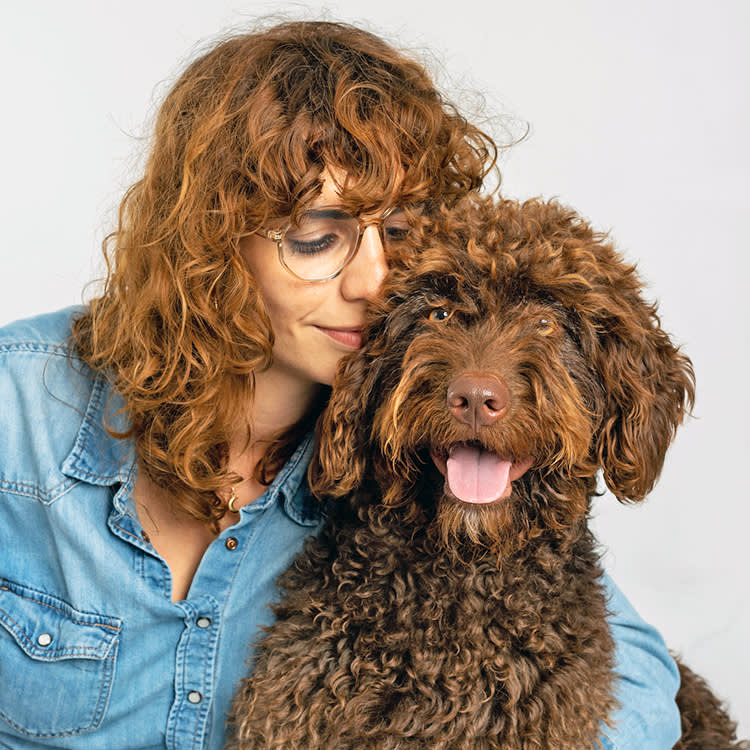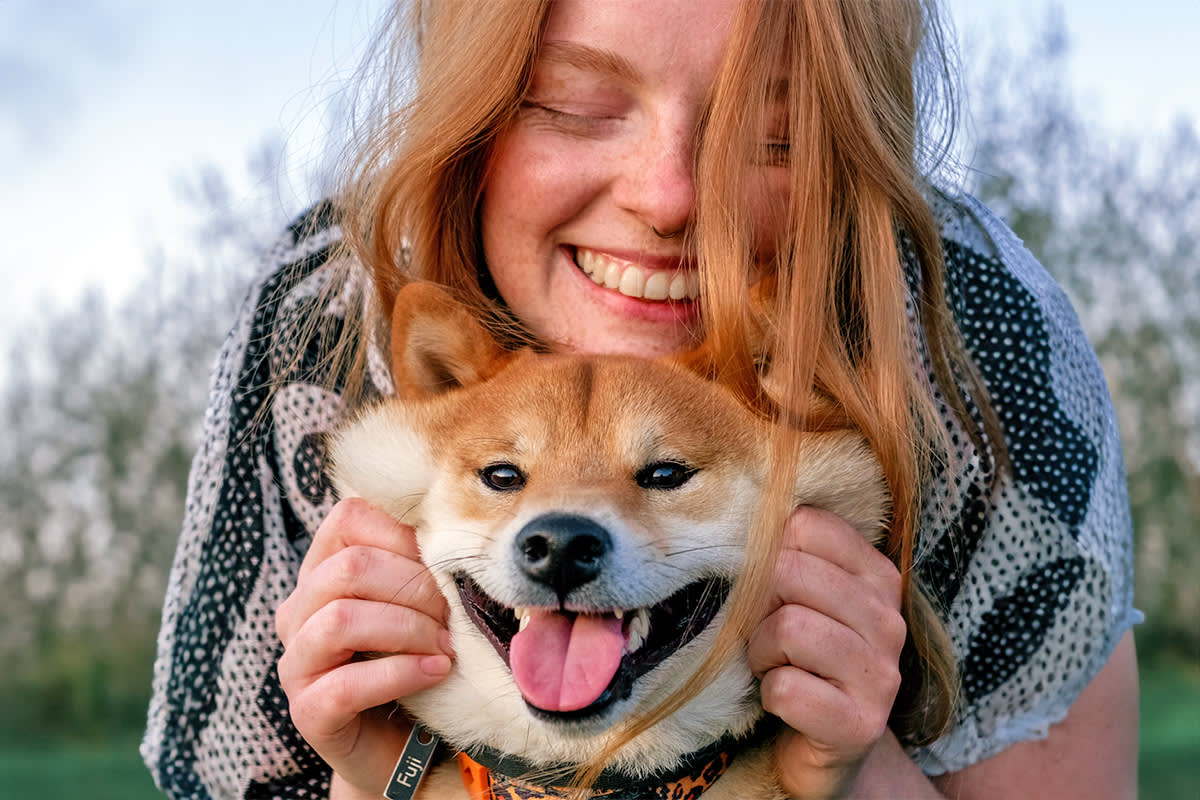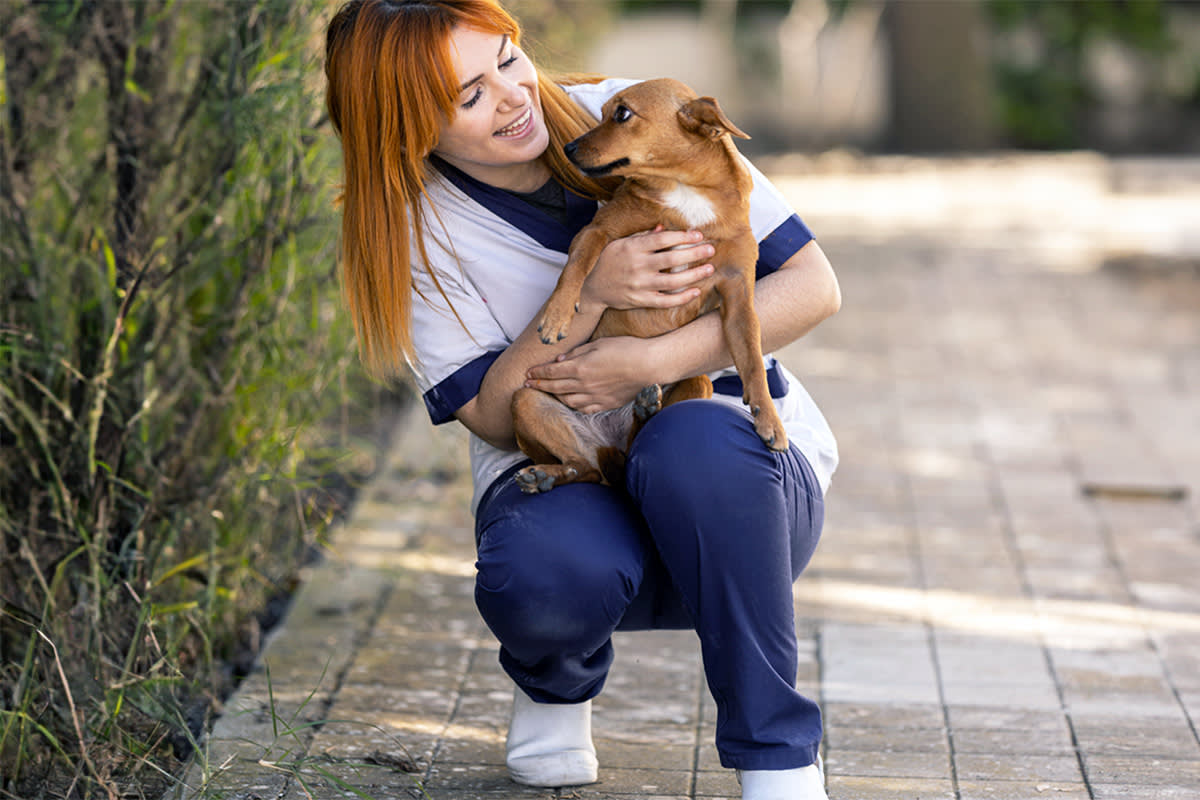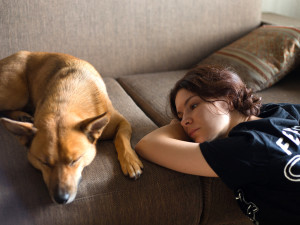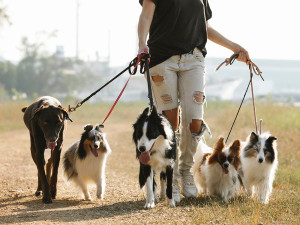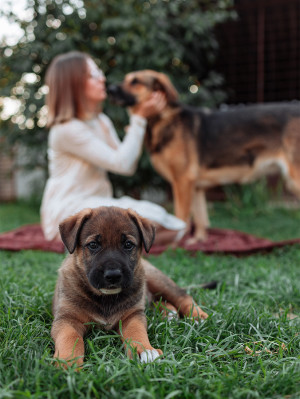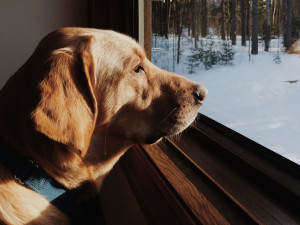People And Their Dogs Really Do Look Alike, New Research Finds
You may already know this, but now it's scientifically proven.
We’ve all heard the suggestion that dogs look like their human guardians — and we recall it every time we pass a statuesque, long-haired blonde walking a cream-colored Afghan Hound or a petite, curly-haired brunette cradling a brown Mini Poodle. But it turns out it’s not just a coincidence — it’s the truth. A new reviewopens in new tab published in Personality and Individual Differences analyzed fifteen different studies that measured similarities between people and dogs, and it concluded that dogs and their people really do look and act alike.
Dogs and their people look alike
In one study conducted in 1999,opens in new tab researchers compared the length of dogs’ ears and the length of human hair. They asked 261 women to rate their preferences for photos of dogs of different breeds. They found that women with long hair preferred lop-eared dogs (English Springer Spaniels and Beagles), and women with short hair preferred prick-eared dogs (Siberian Huskies and Basenjis). They concluded that people may select for dogs with features similar to their own when choosing a breed.
Trick question: All dogs are perfect! But find out which type is the best fit for you.
In a 2004 study,opens in new tab 45 dogs and their pet parents were photographed separately, and participants were asked to match the dogs with their humans. The results were surprising: People were able to match purebred dogs with their humans most of the time, but not non-purebred dogs. There was no correlation between the amount of time the person had the dog and how much they looked like the dog. “The ability to match people and pets did not seem to rely on any simple trait matching (e.g., size or hairiness),” Michael M. Roy, the study’s lead author, wrote.
A 2015 studyopens in new tab went a step further. Participants were shown two photos at once: one of a real dog/guardian pair, and one of a fake pair. The participants were mostly able to choose which photo depicted a true dog/guardian pair. Eighty percent of the participants “found that the set of matching pairs was more similar than the set of non-matching pairs,” Yana Bender, the review’s lead author, summarized.
How much do you spend on your pet per year?
Researchers then repeated the experiment with a set of photos in which the dogs’ and humans’ mouths were masked and another set of photos in which their eyes were masked. They found that people were mostly able to choose the correct pairing when the mouth was masked, showing only the eyes of the dogs and humans; 73 percent chose the matching set. This wasn’t true when the eyes were masked, showing only the mouth; only 50 percent of participants were able to make a match.
These studies suggest that people select dogs who look like them, either consciously or subconsciously. It’s less likely that people grow to look like their dogs over time, since a correlation hasn’t been found between duration of guardianship and physical similarity.
Dogs and their people act alike, too
Interestingly, dogs and humans show internal similarities as well as external ones — and some of these similarities can contribute to the overall effect that they look alike, the review authors point out. “Indeed, there is even evidenceopens in new tab for the synchronization of dog’s and owner’s movement,” Bender wrote. “This could have an impact on perceived similarity in everyday life.”
Several studies have found a correlation between dog parents’ self-assessment on personality tests and the personalities of their dogs. One studyopens in new tab compared the personalities of dog guardians, as measured by the Big Five Personality Inventory, to the behaviors of their dogs and found that pet parents who rated highly on extroversion had dogs who behaved in a more extroverted manner. Another studyopens in new tab found that openness of a pet parent corresponded to trainability of a dog, and extroverted dog parents were less likely to have dogs who showed aggressive behavior.
The review’s author suggests that, since people often don’t know a pet’s personality before bringing them home, it’s likely that our and our dogs’ personalities converge over time. And it’s a two-way street; we influence our pups, and they influence us. “A neurotic owner might act more nervous and inconsistent with their dog which in turn can have an influence on the mood and behavior of the dog,” Bender explained. “In turn, a neurotic dog might express high levels of anxiety which in turn might make the dog owner feel more anxious and alert.”
In the end, the review “found evidence for the similarity between dogs and their owners, in their appearance, as well as in some personality traits.” In other words, you’re not imagining it: You and your pup are two peas in a pod.
